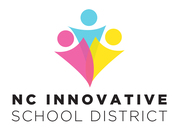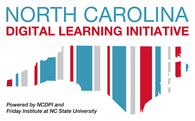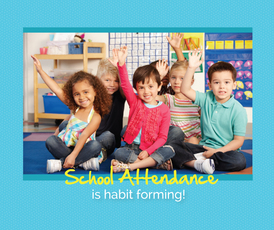 Board Weighs Strategic, Budget Priorities
LEGISLATED CUTS IN 2018-19 ALSO DISCUSSED
In a wide-ranging discussion, the State Board of Education spent the first of their two-day February meeting deliberating strategic and budget priorities for the state’s public schools and for the Department of Public Instruction. The discussion began with squaring the state’s submitted Every Student Succeeds Act (ESSA) plan with revisions directed by the U.S. Department of Education, and concluded with consideration of how to respond to the Governor’s request for the Board’s priorities for expansion funding in 2018-19.
The
board’s budget discussion followed a review of its strategic plan and the
various indicators it uses to measure statewide education goals – from high
school graduation rates and student test scores to the percentage of teachers
rated as effective or highly effective.
In the wake of last year’s $4.4 million legislated cut to the DPI
budget, and with another $5.1 million set to be cut in 2018-19, board members expressed
concern about the agency’s capacity to support schools in reaching goals for
improved performance.
One million dollars of the 2018-19 legislated cut is associated with an operational review of the agency that is just getting underway. The timing of those cuts, which could be identified as early as spring 2018, also caused concern among board members.
N.C. Superintendent Mark Johnson said the operational review, whose findings are due to the General Assembly May 1, will look closely at the agency’s operations and needs, not necessarily just spending cuts.
“If they come in here and they say, ‘This department can not handle any more cuts,’ then that’s the answer,” Johnson told the board.
As part of its budget discussion, board members ranked their strategic goals in order of priority to help guide the request to the Governor’s office and the General Assembly for additional funding. Board members agreed on these priorities:
1. Excellent educators
2. Postsecondary preparedness
3. Educational equity for all students
4. Health, safety and responsibility of students
5. Personalized education
6. Financial and technological support for districts
The
board will set its request for budget expansion items at its March meeting.
|
Board Adjusts Alternative School Accountability Rule
SCHOOL PERFORMANCES GRADES REQUIRED UNDER ESSA
To
gain approval of North Carolina’s plan under the federal Every Student Succeeds
Act, the state needs to make adjustments related to accountability,
Federal Policy Director Lou Fabrizio told the board. Chief among them relates
to performance measures for alternative schools, which are granted a degree of
flexibility apart from the A-F school performance grades used for regular
public and charter schools.
Under
ESSA guidelines, the same measures of “annual meaningful differentiation” must
be applied to all schools, including alternative schools, if they have
sufficient data to generate a letter grade. To comply with that rule, the board
approved a measure that will mean the approximately 100 alternative schools in
the state will now receive a school performance grade for federal
accountability reporting.
For
schools that do not have sufficient data in a single school year for an A–F
School Performance Grade designation, three years of data will be used to
calculate a letter grade. For some schools where all students’ data may be sent back to a base school, the sending school will receive the letter grade
of the school to which the highest percentage of the data was returned.
However,
for state accountability reporting, the Alternative Schools Accountability
Model policy remains in place, maintaining flexibility for those schools in
choosing from among several options for performance measurement.
Accountability
Services Director Tammy Howard told the board that the state will meet the ESSA
requirements but plan to seek a waiver from the requirement to use the same methodology for all schools. She said that DPI will consider stakeholder input in the proposal of an alternative accountability model to be included in its waiver
request. The waiver would allow the use of an alternative accountability model
for schools with at-risk populations and schools with special populations to
use the alternative accountability model for ESSA.
Ernst & Young Selected for DPI Operational Review
State
Superintendent Mark Johnson told the board that the business and government
professional services firm Ernst & Young has been chosen to lead the operational
review of DPI.
“I
have been advocating for a third-party evaluation of DPI’s operations since
before I was elected,” said Johnson. “This project will look at how we are
structured, what kind of work we do, and our business processes to see what’s
working well and what can be improved. We look forward to working with EY and
reviewing the findings to improve our service to North Carolina’s students and
educators.”
The
firm was chosen as part of a competitive bidding process and will begin work
immediately. Ernst & Young has extensive experience in K-12 education consulting,
including working with multiple state education agencies, many school
districts, and a host of education stakeholder groups.

Board Grants Delay
for Selecting School Operator for Innovative School District
Board
members approved a 60-day extension of a deadline for the Innovative School
District to select an organization to operate Southside Ashpole Elementary in
Robeson County. Legislation enacting the district had set Feb. 15 as the
deadline for choosing the school operator.
Two
entities submitted applications for consideration by the ISD. They were North
Carolina-based Achievement for All Children and The Romine Group, based in
Michigan. SchoolWorks, a third-party evaluation firm, reviewed the applications
and submitted individual reports on each organization to the ISD.
ISD
Superintendent Eric Hall told the board that based on those reports, neither
entity had yet met the high expectations imposed by the district. The ISD now
plans to convene negotiations with both groups to gain additional information
about their capabilities and approaches to improving student achievement at the
school.
"We were
determined not to make a recommendation merely for the sake of expediency,”
Hall said. “This is far too important. We are fully committed to getting the
right fit for Southside Ashpole and honoring the partnership we have with the
Rowland community. If the negotiations with the entities do not produce the
clarity and assurances we need, we will seek other options."
|

Board Approves New
Grant Competition for Digital Teaching and Learning
Digital teaching
and learning in North Carolina’s public schools will benefit from a second
round of competitive grants approved by the board this month.
Up to $1.83
million provided by the General Assembly will be shared by school districts and
charter schools during the 2018-19 school year for planning, executing or
demonstrating effective innovative models for digital learning. An initial
round of grants totaling $1.38 million were awarded late last year by the N.C.
Department of Public Instruction to 30 districts and one charter school to
better harness digital tools and resources for instruction and student
learning.
Based on high
demand and need shown by schools in last year’s grant competition,
one target of the latest cycle expands the reach of support for planning
efforts to more districts and charter schools at the beginning stage of
development for digital teaching and learning. The funds are aimed at producing
high-quality implementation plans for digital-age learning. Traditional school
districts may apply for funding up to $50,000 and charter schools up to
$15,000. Based upon available funding, DPI aims to fund up to 10 planning grants.
A second focus
of the Digital Learning Initiative grant program is supporting implementation
efforts. This funding would provide an opportunity for school districts or
charter schools to execute robust plans already developed. This is a two-year
grant that would begin with the 2018-19 school year and conclude in the 2019-20
school year. Traditional school districts may apply for funding up to $75,000
for each year (for a total of $150,000), and charter schools up to $25,000 each
year (for a total of $50,000). Based upon available funding each year, DPI plans
to fund up to 18 implementation grants.
Grants will also
be awarded for a third purpose – to develop “innovation academies” –
identifying
districts as leaders for digital teaching and learning in the state and serving
as hubs of innovation for professional learning. This grant type is a unique
and creative opportunity for supporting the state’s movement to successful
digital-age learning for students. As three-year grants the “innovation
academies” would begin with the 2018-19 school year and end with the 2020-21
school year. Traditional school districts may apply for funding up to $100,000
for each year (for a total of $300,000), and charter schools may apply for
funding up to $40,000 each year (for a total of $120,000). Based on funding,
DPI aims to fund four grants for the development of these “innovation
academies.”
The application
deadline for each of these grants
is April 23. Final decisions for selecting grantees may be based on DPI
priorities, geographic and socioeconomic needs, available funding, and
applicants’ prior performance.
|
 Board Sets Policy Defining Chronic Absenteeism
The board gave
final approval this month to a policy setting the state’s definition of “chronic absenteeism,” an issue that has been
attracting increasing attention nationwide as a factor limiting student
outcomes.
As adopted by
the board, the state’s policy now defines chronic absenteeism in the state’s
public and charter schools on this basis:
"Student
Chronic Absentee” is a student who is enrolled in a North Carolina public
school for at least 10 school days at any time during the school year, and
whose total number of absences – excused or unexcused – is equal to or greater
than 10 percent of the total number of days that such student has been enrolled
at such school during such school year.
This definition
applies to all students enrolled in a school, including those who have not
reached the compulsory attendance age, as well as those who have reached or
exceeded the compulsory attendance age.
Education
research shows that chronic absenteeism is an effective and actionable measure.
It serves as an early warning indicator for principals and other school staff
to identify students who are at risk of adverse outcomes due to absences from
school and to intervene to reduce or eliminate absences. In addition, aggregate
reports at school and district levels that measure the percentages of students
chronically absent from school can help identify schools and districts that
would benefit most from additional support and resources.
The board had
been told by DPI staff during earlier discussions that a rate of chronic
absenteeism of 10 percent is consistent with that of other states and is also
supported by research and advocated by the national group Attendance Works.
Educators and
researchers who argue for greater focus on the issue of chronic absenteeism say
the first step for promoting consistent student school attendance and reducing
student chronic absenteeism is collecting, analyzing and using accurate and
consistent data. Schools are then able to identify at-risk students and trends
and to inform when and how to effectively and efficiently target school and
community resources.
|
 Board Approves Three New Lab Schools for 2018-19
The State Board of Education approved three new lab schools to open this fall under the management of campuses of the University of North Carolina. The three schools will raise to five the number of such schools in the state.
· Appalachian State University is working with the Winston-Salem/Forsyth County school system at Middle Fork Elementary School to develop the Appalachian State University Academy at Middle Fork. The school will initially serve 315 students, growing to 360, in grades K-5.
· UNC Greensboro is working with Rockingham County Schools at Moss Street Elementary School to open Moss Street Partnership School, serving 450 students in grades K-5.
· UNC Wilmington is working with New Hanover County Schools at D.C. Virgo Preparatory to open a school with the same name, serving 270 students in grades K-8.
The mission of the lab schools is three-fold: improve outcomes of K-8 students from low-performing settings, strengthen teacher preparation and strengthen principal preparation.
The first two lab schools opened this year: ECU Laboratory School at South Greenville Elementary in Pitt County, serving second through fourth grades, and Catamount School at Smoky Mounty High School in Jackson County, operated by Western Carolina University for students in sixth through eighth grades.
A total of nine lab schools were authorized by the legislation directing their development and to be open by 2019. Three other campuses are in discussions with local school districts to open schools in the following year: UNC Pembroke, with the Public Schools of Robeson County, UNC Charlotte, with Charlotte-Mecklenburg Schools and N.C. Central University is in the process of identifying a partner.
|
|